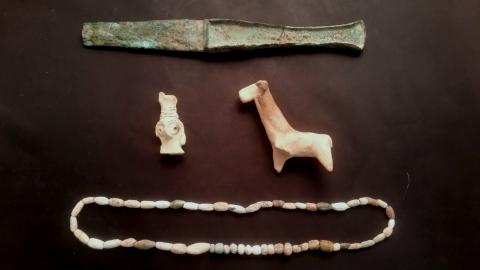MPM's curatorial and collections staff have selected more than 100 important, unique or interesting objects to highlight from the more than 4 million items in the Museum's care. These items reflect the depth and breadth of the collections.
Many of the items featured below are not on exhibit due to their fragile nature. One of the Museum's primary goals is to preserve objects for generations to come.
As a virtual exhibit, we can share with people around the world our most rare and intriguing items without harm to them.
This specimen was collected in northeastern Illinois in the Mazon Creek. The fossils formed approximately 307 million years ago and are preserved in ironstone concretions. These concretions often preserved hard tissues as well as rarer soft-bodied animals, like this “Tully Monster.”
Tullimonstrum gregarium, with its strange body plan, has eluded classification for some time. It has been called a worm, an arthropod, and a mollusk, but most recent studies place it as a basal vertebrate.
These artifacts represent the wide variety of objects in the vast ancient Tell Hadidi collection. Excavated in the mid-1970s by MPM and international archaeologists, the site of Tell Hadidi, located in Northwest Syria on the banks of Lake Assad, was primarily occupied between 3000 BC and 1335 BC with some later, much smaller, Roman and Medieval settlements. The Tell Hadidi collection includes pottery, jewelry, metalwork, figurines, even writing on clay tablets. The site was destroyed in modern-day conflicts in Syria, thus the collection serves as reminder that MPM is not only a repository of knowledge but also one of memory.


